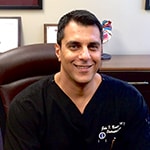October 2025 is Sudden Cardiac Arrest (SCA) Awareness Month, a time to raise awareness about this life-threatening condition. SCA occurs when the heart suddenly stops beating effectively. Unlike a heart attack, which is caused by a blockage in blood flow, SCA is primarily an electrical problem. Without immediate treatment, it can lead to sudden death within minutes.
Warning signs may include sudden dizziness, fainting, chest discomfort, or palpitations. Prompt medical attention and CPR can save lives.
Heart Rhythm Disorders and SCA
- Ventricular Fibrillation (VF) and Ventricular Tachycardia (VT)
These arrhythmias affect the heart’s lower chambers. VF causes the ventricles to quiver instead of pumping blood, while VT leads to dangerously fast heartbeats. Both can result in sudden cardiac arrest if not treated immediately. - Atrial Fibrillation (AFib)
AFib is an irregular heartbeat that increases the risk of blood clots, stroke, and heart failure. Some patients experience palpitations, fatigue, or shortness of breath, while others may have no symptoms at all. Early detection and proper management are crucial to preventing complications. - Genetic and Structural Conditions
Conditions such as Brugada Syndrome, Long QT Syndrome, and Hypertrophic Obstructive Cardiomyopathy (HOCM) affect the heart’s electrical system or muscle structure, disrupting normal rhythms. Awareness and monitoring are essential for reducing risk.
How Heart Rhythm Problems Are Detected
- Cardiac Ultrasound (Echo)
A cardiac ultrasound provides detailed images of the heart’s chambers, valves, and overall function. Patients with significant valvular or cardiac dysfunction are at high risk for developing cardiac arrhythmias and dying from sudden cardiac death. - Electrocardiogram (ECG)
ECGs measure the heart’s electrical activity and can detect irregular beats or conduction abnormalities. They are often used as a first step in evaluating the underlying conduction system and abnormalities that are associated with different syndromes that can lead to sudden cardiac death. - Holter Monitoring and Stress Testing
Holter monitors track heart rhythms over 24–48 hours, while stress tests evaluate how the heart performs under physical activity. These tools are useful for identifying intermittent or activity-related arrhythmias.
Prevention and Management
- Lifestyle and Medications
Maintaining a heart-healthy lifestyle, including regular exercise, balanced nutrition, avoiding alcohol and smoking smoking, can help prevent complications. Medications may be used to control heart rate, rhythm, or reduce stroke risk in AFib patients. - Procedures and Devices
Ablation procedures target abnormal heart tissue to restore normal rhythm. Pacemakers and implantable cardioverter defibrillators (ICDs) help regulate or correct dangerous heart rhythms. The Watchman device offers stroke risk reduction for AFib patients who cannot tolerate long-term blood thinners.
When to Seek Help
Sudden Cardiac Arrest is a serious, often sudden condition. Recognizing warning signs, understanding AFib, and using diagnostic tools like echos can help detect heart rhythm problems early, prevent complications, and improve survival outcomes. If you would like more information or personalized guidance, please contact Dr. Beshai, a trusted and internationally recognized electrophysiologist dedicated to providing advanced, patient-focused care.
Dr. Beshai is a board-certified electrophysiologist internationally renowned and respected for his expertise and research. Having published in major medical journals and travelled all over the world to present research, he is dedicated to providing innovative, state-of-the-art care to his patients.
- John F. Beshai, MDhttps://heartbeataz.com/author/heartbeata/
- John F. Beshai, MDhttps://heartbeataz.com/author/heartbeata/
- John F. Beshai, MDhttps://heartbeataz.com/author/heartbeata/
- John F. Beshai, MDhttps://heartbeataz.com/author/heartbeata/


